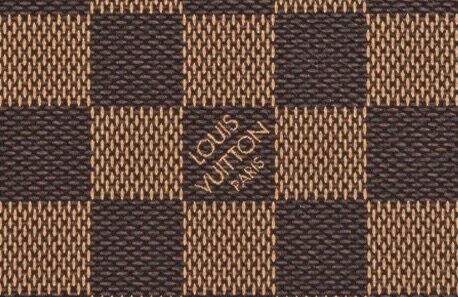Introduction
Fashion is one of the most significant artistic industries thriving in today’s world. It has become a customary example that helps in postulating about consumption and compliance in economic thinking. Fashion has long been seen as a window into social status and progress by social ideologue. It has been used by cultural theorists to reflect on abstract significance and social values and also has been seen as encapsulating representative features of novelty and also history. It can be said that every being buys apparel, wear clothes, experiments with their style and in someway takes part in fashion.
However, to say that fashion influences just clothes is a euphemism; to be more precise, it can be seen that fashion is influencing almost every aspect of our everyday lives. Fashion patterns are often a result of political, social, and economic shifts and developments in the world around us. Fashion is a vital aspect of not only the arts, but also the economy. Only the aesthetic side of it is evident at first sight, with its elegance, beautiful creations, and materials. However, if one looks closely, this glitter hides an entire highly established and profit-generating industry. There can be seen four levels in which the industry works. First being that there is production of raw materials, textiles, leather and fur followed by the production of fashion goods carried forward by designers, manufacturers and others. Thirdly, retail sales and lastly advertising and promoting the products.
These levels are made up of a number of distinct but interconnected markets, all of which are dedicated to meeting customer demand for apparel while allowing industry participants to make a profit. Not only is the global fashion apparel industry one of the most important sectors of the economy in terms of investment, sales, trade, and job creation, but it is also an integral everyday resource for fashion creatives, executives, and entrepreneurs. The final business practise is selling. Among other business skills, the ability to sell is extremely important in order to survive in this industry.
Understanding Fashion and Law
For various people, the word fashion has a different meaning. “For a new age, fashion is an art or an individual statement of expression.” Coco Chanel, a French fashion designer, described fashion as follows; “Fashion is not something that exists in dresses only. Fashion is in the sky, in the water, in the street; fashion has to do with ideas, the way we live, what is happening”.[1] This description of fashion is both accurate and broad. Fashion isn’t just restricted to what we wear but also to what kind of personalities we carry. Whereas the understanding of law, connotes the sovereign power of such rules of conduct as are defined by the legislature or approved by the government to express the will of the ruling class. The significance of Blackstone’s concept of law in this regard cannot be overstated. And it defines law as, “a law of action prescribed and determined by a superior to which some inferior is obligated to adhere, and which is applied indiscriminately to all types of action, rational or irrational.”
To understand about the fashion law, we can go to the depth where it is a branch of law that deals with intellectual property rights such as copyright, patents, trademarks, and trade designs, among other things. The design Act of 2000, the Copyright Act of 1957, and the Geographical Indications of Goods (Registration and Prohibition Act) of 1999 all provide protection under India’s intellectual property regime to the fashion brands, including the fact that there seem to be three separate laws protecting the fashion apparel and design regime. The Copyright Act of 1957 protects the creative works of a fashion designer. The Design Act of 2000 protects the non-functional component of an object’s visual appearance, which includes features in form of configuration, pattern, line composition, and the pattern of colour . A comprehensive list of items and articles of the Designs Rules Act, 2001 for which a submission to the controller may be made can be found in it’s third schedule.. This design right is valid for ten years and can be extended for another five years in some circumstances for a total of fifteen years.
Intellectual Property Rights protecting Fashion Industry
It might not be easy to understand the relationship between the Intellectual Property Rights and fashion industry but the relation between both cannot be denied. The reality is that intellectual property and fashion are inextricably linked. The designs that are approved as fashions are the intellectual creations of an artist, and the law of our land seeks to preserve those creations by granting an exclusive right to those creators to use and exploit those creations for monetary gain.
Trademarks are also important in the fashion industry because they protect a brand name, image, design, logos, and features of fashion attires that enable them to be distinguished from others. In the apparel industry, the key goals of trademark law are in high demand. It concentrates on three key points as follows; to draw the attention of consumers; trademark owners’ interests; and market rivals’ interests.
The creative design work, as specified by Section 2(c) of the Copyright Act of 1957, is protected by copyright laws. A painting, sculpture, drawing (including map, diagram, or chart plan), engraving of an image, the work that an architect does, or any other work of artistic craftsmanship is covered by Section 2(c) of the Copyright Act of 1957. The designer’s design work is protected by copyright. The special provision about copyright in designs registered or capable of being registered under the Designs Act, 2000 is specified in section 15 of the Copyright Act. Under this Act, copyright does not exist in any design that has been licenced under the Design Act of 2000.
Patents are critical to the commercialization of technologies. The kind of works that creators are not eligible for patent rights under the Patents Act. Patents are granted for new inventions that benefit the general public. The fashion industry is unable to obtain patents for its machinery; however, technical advancements provide their machinery with a significant boost in the economic market. The fashion industry produces (clothing, accessories, shoe wear, and a variety of other items) with the aid of technical advancements in order to sell their products in the market.
The form, colour, pattern, and other features of a product are referred to as design. The Design Act of 2000 describes the word “design” in sections 2(d) and 4. According to the fashion industry, the design act does not cover whole garments; rather, it preserves the product’s design, shape, colour, and pattern. Under the Design Act of 2000, the design should be registered. The Copyright Act covers all licenced and unregistered designs, as well as the rights of the design owner. The act’s primary goal is to shield works from invasions of piracy.
A lot of negative comments were made about India’s fashion industry, which has caused a lot of uncertainty in the market. Few key points has to be taken into consideration to make Intellectual Property more favourable to the fashion industry’s security. First, under the Design Act, the word “fashion design” should be described. Second, for the brief time that the unregistered design is on the market, it should be covered. Finally, the Design Act of 2000 could make the process of registering a design more straightforward. These few measures will help the fashion industry thrive in the market while also assisting the talented owners of the works.
Rules to be followed by the companies going online
We now have a gist about the laws that govern a company’s eligibility to sell online, but that is certainly not it. After a company complies with all the laws, the rules and regulations come into the picture. A company needs to abide by these rules to put up a systematic and organized operation on any online platforms. Where some of these rules serve fundamental importance for the operation of the business, others help in smooth functioning. These rules may vary depending on whether the company is putting up a separate ecommerce platform, or has decided to partner with big ecommerce platforms such as Amazon, Flipkart, Myntra, eBay, etc., but there are certain rules that are common to all, which any company planning to go digital needs to abide by.
The generation we belong to today has been used to find every solution online. This leads to sharing of personal data at a large scale with companies. Thus, everyone shopping online needs to be assured that their private data is safe. That is why, the first and foremost, and the most important rule that a company needs to abide by is protecting the data of its customers. Data protection is dealt under the Information Technology Act, 2000, under Section 43A and 72A[2]. Government has emphasised a lot on protecting the data of individuals. Hence, companies need to follow the rules prescribed if they want to sell online, and stay in the market
As mentioned above that data protection is of utmost importance, payment is one of the crucial aspects which falls under data protection. When customers make payment on any online platform, they share a bunch of private data such as card number, CVV, OTPs, UPI ID, etc. Since these are highly sensitive data, they expect that data to be safe. RBI has laid down certain guidelines for payment getaways which a company needs to abide by if they want to sell online. Firstly, being the encryption, where, the website must be using encryption for the payment getaway, so that the data of customers making online payments stays safe, and the payment is received by the vendors in a hassle-free manner. Second being the authorisation request, where, the payment information, as requested by vendors, is sent to the bank for approval. The bank accordingly accepts or denies the payment, and authorises the payment. Lastly comes the order filling in which after the authorization is provided by the bank, the payment is processed at the payment getaway and the order is placed.
Digitalisation of Fashion Industry in the pandemic era
The fashion industry unlike any other industry has been adversely affected by the pandemic that has hit the world and a major drawback could be seen in the industry because of that. The industry has been forced to take a hard look in the mirror as a result of this pandemic and it has also been facing challenges in demands of consumer. COVID-19 has wreaked havoc on a number of industries. The economy of world could be seen to be entered a recession as a result of the crisis, and the fashion industry has not been spared. The 2020 outlook looked optimistic before the pandemic, but the COVID-19 crisis has had a major impact on the fashion industry. During the pandemic, the brands were made to reconsider their business models in regard of the situation.
We could see most of the businesses opting for digital platform as their business has been hit by pandemic and made them suffer a huge loss. Digitalisation is not only becoming a more critical distribution channel; it can also assist businesses in adjusting cost structures and making each phase of the supply chain better, quicker, and less expensive. For example, digitization will help build a more resilient supply chain by enabling new logistics and sales fulfilment options (such as click-and-collect and drive-through), fuelling creative forms of customer acquisition, and helping predict and manage inventory. This will make all the data to be enabled, which has never been more critical in terms of transparency, governance, and accuracy.
As a result, being a digitally savvy brand can no longer be thought of as a separate company. Rather, it will become increasingly important to businesses and the entire consumer-brand relationship. There are no longer any traditional market categories, geographies, or one-size-fits-all solutions. New service and experience standards are being developed, with the goal of transitioning from being a product brand to one that forms and executes contextualised, consumer-centric propositions.
Conclusion
It takes years to create a popular brand, but just minutes to ruin one. Fashion brands have always had to be ready and willing to react to varying levels of complexity, danger, and credibility. However, in an environment that is becoming increasingly competitive and volatile, brands will need to strike a balance between their growth ambitions and operating strategies and the strategic risks they face.
Companies must also improve their diligence, with brand and prestige being the most valuable assets to safeguard. They use digital transformation to effect organisational change, mitigate reputational risks, and bridge the gap between consumer preferences and the service and experience they offer. For a fashion brand, this entails reimagining how shopping can be done in the digital world, rather than simply digitising the physical world’s shopping process.
Bibliography
The Copyright Act of 1957
The Design Act of 2000
The Trademarks Act of 1999
The Information Technology Act of 2000
[1] Fashion Law Institute’ (Fashion Law Institute, 2017 http://www.khorshidchehr.com/what-fashion-is accessed on 26 January2019
[2] https://indiacode.nic.in/bitstream/123456789/1999/3/A2000-21.pdf
Author: Riya Raman
 LLB(H) student at Bennett University and has done her bachelors in English Honours. Her area of interests in law are towards Intellectual Property law, Criminal law and Media law and also in writing and research, literature, novels.
LLB(H) student at Bennett University and has done her bachelors in English Honours. Her area of interests in law are towards Intellectual Property law, Criminal law and Media law and also in writing and research, literature, novels.

















